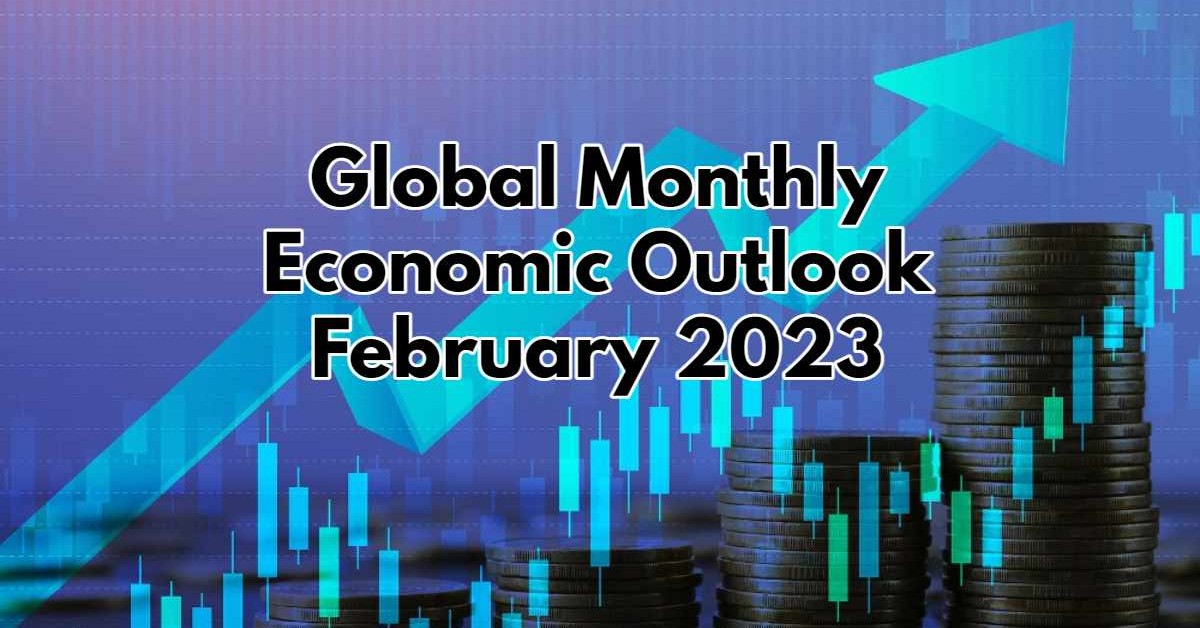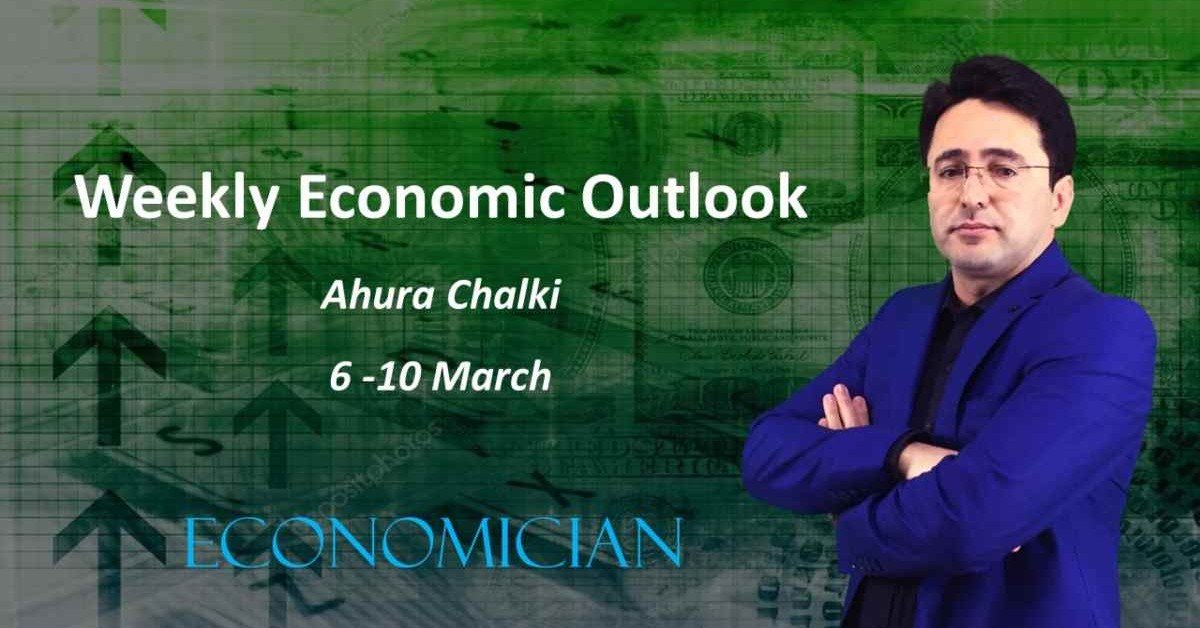Global Monthly Economic Outlook | February 2023
2023 started with many surprise data from different economies, Chinese reopening, decreasing inflating across the globe, and upward revisions by the World Bank to better economic growth expectations. This article will review the most known symbols and watch what we expect in February.
US DOLLAR
The US dollar started the year with a 2% gain just in the first week but later lost steam and closed the January lower and around 101.70. February started differently. While at the first day of the month, Fed ended its two-day monetary and policy meeting with a slightly hawkish tone. Despite the initial adverse reaction, later US dollar also started to gain and recover from multi-month low levels. Later in the same week and on Friday, February 3, with outstanding data, including non-farm payroll with 517K newly created jobs, the unemployment rate was at 3.4%, higher participation rate, and S&P Global Composite and Services PMIs, that part of Powell's speech were more carefully considered that he mentioned about the strong impact of economic data on Fed subsequent decisions. With the data we have, some analysts believe that Fed can raise the rates to 5.4%, up from earlier 5.1% expectations.
To guess more accurately the developments of the US dollar in the coming weeks, we have many other data and events to watch in February, including Initial Jobless claims every Thursday, Michigan Consumer Expectations (9th), Inflation data (14th), Retail Sales (15th), Building permits, producer's Inflation, and Philadelphia Fed Manufacturing Index (16th), Home Sales (21st & 22nd), PCE Price index and personal spending (24th), Durable goods orders (27th), and CB Consumer Confidence (28th).
Inflation, retail sales, Personal Spending, and income will be more meaningful and closely watched among these data. However, signals are still about acceptable economic conditions, a strong labor market, and fears of recession, and all these mentioned factors will favor the US dollar. The USD index target is about 105 for February.
Euro
The common currency was the strongest among its rivals in January. However, with the economic data that we had, February did not start with the same attitude, while a 50 bps rate hike and signal for another 50 bps rate increase in the March meeting should have increased the value of the Euro.
Year-on-year inflation came in far softer than expected, at 8% against a consensus forecast of 9.0%, down from December's 9.2% and October's all-time high of 10.6%. However, despite the recent slowdown, the fact is that inflation is still much higher than the ECB's acceptable levels. This is while Core inflation at 5.2% did not change, which is not good news, even if it is less than the 5.4% estimates! In the labor market, same as the US job market, we can still see robust data. Eurozone unemployment remained at an all-time low of 6.5%, with Germany and the Netherlands posting the lowest figures and Spain, Italy, and France the highest.
With these data, after hitting nine-month highs of 1.086 on January 23 and a 1.5% overall rise in the first month, EUR/USD can move at a natural zone in February. In the economic calendar, we still have many other data to watch in the rest of the month, such as the EU Leaders Summit (10th), EZ GDP (14th), EZ Industrial production and Trade balance (15th), French, German & EZ PMI numbers (21st), Germany and EU ZEW economic conditions (21st), Inflation numbers (23rd), and German GDP (24th).
STERLING
After more than a 2.15% gain in January, the Sterling started February with a free-fall to become the second weakest currency among G10, as UK inflation still pressures the country's economy and currency. If inflation concerns continue, we can still expect further underperformance. December inflation eased to 10.5%, which is lower than estimates, and October 11.1%, but still, it is too high. UK unemployment is at 3.7%, matching expectations and confirming the strong labor market, the same as US and EU economies.
While the housing market has shown few signs of recovery, the labor market is also widely projected to weaken as the economy shrinks, which means we can expect even more pressure on the Sterling. On top of that, despite a 50 bps rate hike by the BoE at the beginning of the month, the bank statement and Mr. Andrew Bailey's comments after the meeting were somehow dovish to avoid a brutal recession, which caused more pressure on Pound.
We have much less reason to be optimistic about the sterling strength in February. For the rest of this month, we expect a more stable Sterling around the current level (GBPUSD:1.20), with a bearish tendency. On the economic data front, BoE MPC Treasury Committee Hearings (9th), GDP (10th), UK labor market data & Inflation numbers (14th), and Retail Sales (17th) will be the most important events and data to watch.
Japanese Yen:
Despite what BoJ says, they have already changed their policies. BoJ adjusted the 10-year yield band in December and continued that in January while increasing the flexibility of the facility that lends money to commercial banks for their purchases of government bonds. On the other hand, the Japanese central bank believes that macroeconomic assessment shows that stimulus is still needed. They are continuing more stimulus to increase the BOJ balance sheet while other major central banks decrease that, which will not favor the Yen. BOJ's balance sheet grew more than 3.3% in January. This is one reason that many market participants are still skeptical of Japan's monetary policy and currency value sustainability. Considering all mentioned factors, Yen rose almost 8% against US Dollar, but the continuation of this trend in February will accompany many doubts. USDJPY target for February is about 135 for February.
Japanese Q4 2022 GDP and Industrial production on February 14, Trade data (18th), National Inflation (24th), and Retail Sales on 28 will be the most important data to watch.
Gold & Silver
January was an excellent month for Gold and touched its highest level for nine months, while Silver's price was primarily flat. However, both started February with a free fall, as the US dollar made a strong U0turn from its recently seen downtrend.
Gold prices have an opposite correlation with the US treasury yields. After the last Fed meeting, which ended on February 1, market participants had the impression that soon federal reserve would slow and then stop the rate hike in the next two policy meetings to control inflation and, at the same time, to avoid a widely expected recession. This policy reduced the US bond yields and raised the gold demand. As we know, with higher yields, the precious metal's lack of yield makes other interest-bearing assets more attractive in its place.
With a stronger USD, we will see more pressure on Gold for the month ahead, but we should remember that fear of recession will slow down the bears. Therefore, seeing weaker Gold between 1,800 and 1,880 is more likely before we have a catalyst to increase the price. Thus overall condition ensures that the price stays within the reasonable range in case of slipping.
Unlike Gold, Silver did not have bright days in January, as economic growth was still worrying, and safe-haven demand decreased; therefore, we had less need for Silver.
For February, even after this reduction, Silver can still stay weaker and get more pressure, as inflation fear, stronger USD, and the continued concerns of economic growth and perhaps recession can reduce the Silver demand, but it is for a brief period. For February, we may see the price between $21-$22, but the 2023 outlook is above $30.
WTI
After a sharp fallıng at the begıng of the month and a fast recovery later, WTI closed the month at less than $2, lower around $79 in January. Oil and, in general, the energy market depends on economic data, OPEC+ decisions and policies, and geopolitical tensions.
For February, we expect no surprise in economic data. Most analysts and policymakers in central banks are waiting to see the previously made decisions' effect on markets. Therefore, for now, we have to watch other factors.
OPEC+ is planning to wait to raise its crude production levels. This is while Russia recently announced that they would cut 500 barrels of daily production from March in response to international sanctions. These decisions, in line with China's reopening, will favor the oil price.
On the other hand, other factors can pressure the prices. Natural gas prices lost almost 32% of their value during January, and lower gas prices will also decrease the Oil demand. On top of that, economic data shows slower growth in US, UK, and Eurozone, even though the labor market is fine. Among bearish factors, Vortexa on Monday reported that the amount of crude stored on tankers that have been stationary for at least a week increased +3.5% weekly to 76.69 million bbl in the week ended February 3.
In summary, February will not be such a volatile month, with WTI trading at around $80 and Natural gas at about $3.
Wall Street
A fantastic start after printing the worst annual performance in 14 years in 2022 eased the worries of a brutal recession. At the same time, the earnings report of the fourth quarter published in January came in better than many had feared. Economic data, outlook, and earnings helped the benchmarked SP500 index to raise more than 6% in the first month.
February started with a Fed meeting and NFP data. The market reacted naturally to even the Fed's decision after the labor market data. Since Fed was between hawkish and dovish, mentioning that the next decision will be data-dependent, 517K newly created jobs in January made investors believe that the Central Bank can continue its strict policies. However, it is a critical period for the Fed when they have to determine whether the US economy will face a soft landing or we have to wait for a recession.
The Conference Board's Leading Economic Index, a popular barometer for the economy's health, has fallen for ten consecutive months. Economic data, including Service and manufacturing PMI, also signal softer economic growth. This is while gross domestic product and labor market readings show that the US economy remains on solid footing. Weaker economic data in some sectors and a more robust labor market tell us that despite decreasing inflation in the last few months, it can start rising again, which makes the January and February inflation numbers more critical than other times to watch.
So, inflation and interest rates are still the critical market catalyst for February. The overall expectation is natural, with a bearish tendency for US stock markets.


















